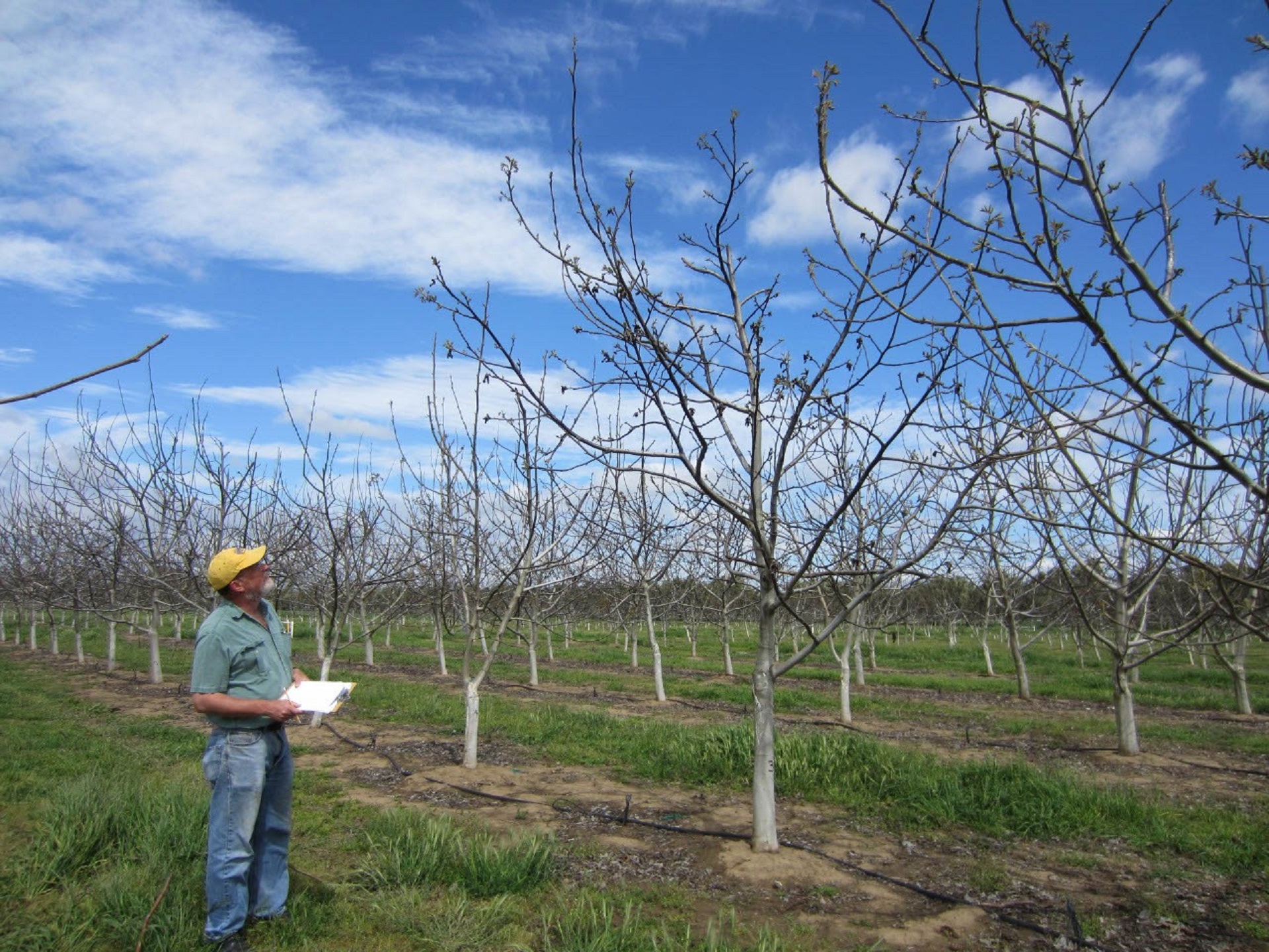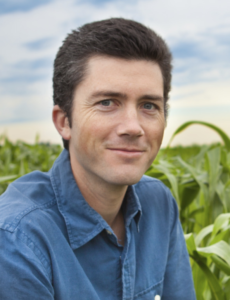
It’s been more than 40 years since the University of California’s Walnut Improvement Program released a variety as successful as Chandler, which today comprises more than a third of California’s walnut acreage and is the standard to which all others are compared.
That’s not for lack of effort. As Chuck Leslie, who has worked for the program for 35 years, said: “Chandler is a tough competitor.”
Because of its good yields, premium quality and desirable growth characteristics, even today, California growers continue to plant Chandler in high numbers. In 2017, for example, there were more than 16,000 acres of nonbearing Chandler in the ground, according to figures from the National Agricultural Statistics Service, in addition to the more than 120,000 bearing acres.
The main drawback to Chandler, in fact, is something caused precisely because of its popularity: When the variety is ready for harvest, walnut processors are overwhelmed with nuts. Developing a variety that harvests earlier has long been a focus of the Walnut Improvement Program.
In Search of Early Varieties
“We are trying to push out varieties with earlier harvesting dates than Chandler with good quality,” Leslie said.
Over the years, the program has released several early harvesting varieties that have attracted growers, including three in the past 10 years alone. It is preparing to release another one this year.
The variety doesn’t have a name, nor a release date, and Leslie said he is hesitant to talk about it until release plans are further along. Still, he and fellow UC Davis walnut breeder Pat Brown provided West Coast Nut a snapshot of what to expect.
“What is nice about this one is it has good solid yield in a time frame well ahead of Chandler, and when we had samples tested by commercial scorers, they often scored as well as Chandler,” Leslie said. “That makes me feel comfortable that both the quality and the appearance of the nut are there to compete in that (earlier harvest) time slot.”
The variety’s leafing date is another promising characteristic, according to Brown, in that it blooms after several of the recently released early-season varieties, reducing its exposure to walnut blight, frost and codling moth.
“It is not a real short-season variety,” said Brown, director of the Walnut Improvement Program, “but it is shorter than Chandler.”
Leslie said that breeders never know for sure whether a variety will succeed until it has been in production for several years. But he said: “I am pretty optimistic about this one. We have had it out in some fairly good numbers with several good growers, and one of the growers is putting it in a larger block under test agreement right now, so that kind of thing is encouraging.”
The variety still has to be reviewed by the University of California Intellectual Property Office and then go through the patent process before release, a process that Leslie said can take a couple of months. He said to look for its release sometime this summer.

New Varieties in the Pipeline
If it is released this year, the new variety will follow suit with the program’s trend of releasing a new variety once every three or so years. It released Ivanhoe in 2010, for example, Solano in 2013 and Durham in 2016.
“We are trying to stay on that schedule, releasing things at least every three or four years,” Leslie said.
Leslie compared the yield of the new variety to Solano, which has yielded well to date, and the quality to Durham. “I think the quality of Durham has been excellent,” Leslie said. “We are now watching to see if it really comes in with enough yield, but I think its yield is okay when it is mature.”

The Walnut Improvement Program has several other promising varieties in the pipeline that it anticipates releasing in the next few years, Leslie said, including several early-harvest varieties with a range of leafing dates.
Looking further ahead, Leslie said growers could see releases with multiple beneficial traits, in large part because of what Brown has brought to the program.
“He has brought much more of a genomics approach. He is sort of modernizing the program,” Leslie said. “We are using more DNA information, using markers for traits, and using the marker information to select earlier in the process.”
The main benefit of the new approach, Leslie said, is that by using genetic markers, the program today can eliminate hundreds of poor candidates in the greenhouse before taking them to the orchard.
“Those trees now don’t go in the ground. We aren’t evaluating a lot of seedling trees in an orchard that end up not being good trees, so we don’t have those farming expenses and those evaluation expenses. And we are committing the same amount of ground to a larger number of trees that are likely to go forward,” Leslie said.
“Pat has brought a lot of stuff into the program that we weren’t able to do before,” Leslie said. “And he is moving fast on it. It is working out well.”
Genetic Marker for Color
To date, Brown has developed a genetic marker for lateral bearing and one for early harvest. More are in the works, Brown said, including next up, a marker for pellicle color.
“We know that developing a marker for pellicle color is going to be harder,” Brown said. “Hopefully next year by this time, we will have something we can use.”
Down the road, the program hopes to have markers in place for several traits that have proven difficult to advance in the past, including for blight resistance and walnut husk fly resistance.
“If we get a marker for color, we can take blight-resistant parents, make crosses from them and screen the crosses with markers to throw out a lot of stuff,” Leslie said. “So, we will be working with a better set of seedlings and that can accelerate the breeding process for incorporating those traits.
“That is the direction we are heading,” he added. “That is where the DNA information starts to really come into play in terms of efficiencies.”
“We can theoretically develop a marker for any trait that we have good enough data from,” Brown said. “The caveat is that if the trait is complex, and if the genetic control of the trait involves a lot of genes, it gets a lot tougher.”
Someday, given the scientific advancements, maybe walnut growers will even have a variety that improves on Chandler. But Leslie isn’t holding his breath on that, noting that he’s been down this road before.
“We never want to say something is equal to Chandler,” Leslie said, “but we certainly are trying.”

Nut Crops Breeder Energized by Opportunity
By Mitch Lies, Contributing Writer
In July 2017, nut crops breeder Pat Brown came to UC Davis from the University of Illinois, where he worked for seven years.
Brown, who holds a Ph.D. in plant biology from Cornell, said the move has energized him.
“It has been exciting for me coming into trees,” Brown said. “It is a world of opportunity, because we are starting out at a pretty basic level and because the genetics are more challenging than working with corn, sorghum, wheat and soybeans.”
Brown, who is currently focusing on walnuts and pistachios and is director of the Walnut Improvement Program, said grower assistance has been vital to his research since arriving in California.
“We have a couple of stages on campus that the trees can move through, but once we are pretty sure that something looks good, we need growers across the state to trial it before we release it,” Brown said. “That is a key step in putting out new varieties.
“And before we get to that stage, we are constantly trying to figure out what growers are looking for, what new things they have tried that they like and don’t like, and whether there is anything additional that we need to be selecting for, any niches that need to be filled.”
“The grower input and the grower help has been extremely important,” Brown said.
To offer input, see related article in this issue on walnut breeding surveys by Andreas Westphal.















